
How to adjust shoes to the shape of your foot? Know your type
Not all feet are the same! Egyptian, Greek or Roman - each type of foot requires a different type of footwear. Get to know the structure of your feet and learn how to choose shoes that perfectly match their anatomy. Comfort and health start with the right choice.
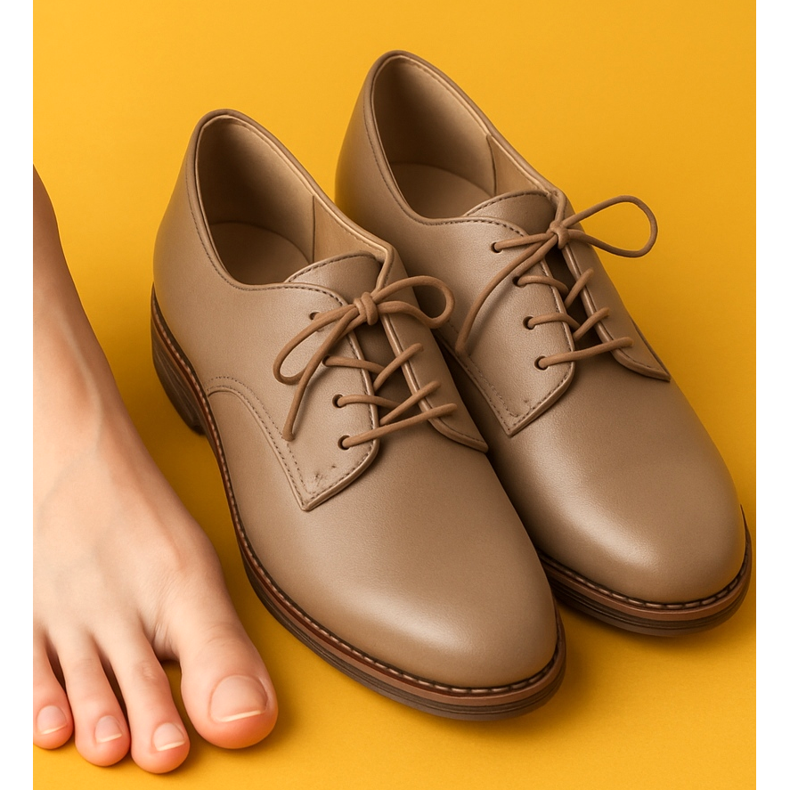
Why does foot anatomy matter when choosing shoes?
Each foot is unique like a fingerprint. Differences in the anatomical structure of the feet affect not only the comfort of wearing shoes, but also the health of the entire musculoskeletal system. Choosing shoes that fit only the length of the foot is the most common mistake, which leads to pain, calluses and more serious health problems.
Feet differ in width, instep height, toe length and many other parameters. Shoe manufacturers create their models based on average dimensions, which means that not every shoe fits every foot. Understanding the structure of your feet is the key to choosing comfortable footwear that will last for years.
In this guide, we'll discuss the different types of feet and tell you how to choose the right shoes for them. You will learn the characteristics of your anatomy and learn to recognize footwear that is perfect for your foot type. Thanks to this, you will avoid disappointment and investing in uncomfortable shoes.
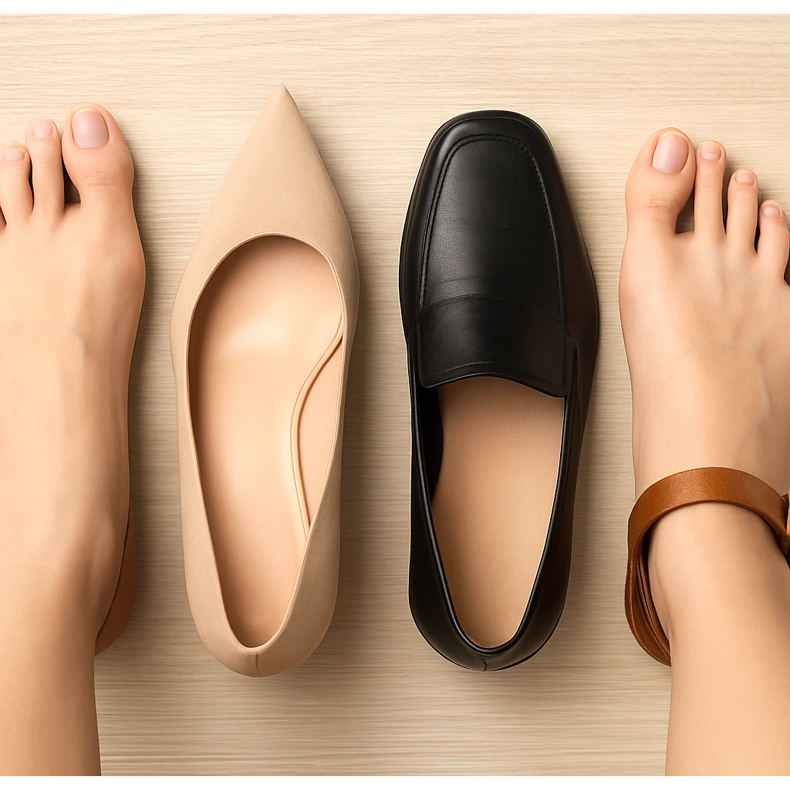
Foot types according to the shape of the toes
Egyptian foot
This is the most common type of foot, occurring in about half of the population. It is characterized by the fact that the big toe is the longest and the remaining toes gradually shorten to form a diagonal line. People with this type of foot are lucky because most shoes are designed with this shape in mind. Shoes with a rounded or slightly almond toe work well. Avoid pointy pumps that may pinch the big toe.
Greek foot
In this type, the second toe is longer than the big toe. It occurs in about forty percent of people. The ancient Greeks considered this shape to be ideal and depicted it in their sculptures. People with Greek feet should choose shoes with an extended toe and additional space in the front. Square toes can cause abrasions on the second toe. Open-toe sandals and shoes with an oblique front shape work well.
Roman foot
Also known as square foot, it is characterized by the similar length of the first three toes. This is the least common type. People with this type of foot need shoes with a wide, square toe that will provide each toe with enough space. Wide fit shoes with a straight front line are ideal. Rounded toes can pinch your toes and cause discomfort.
Celtic foot
A rarer type characterized by a long second toe, similar to the Greek foot, but with additional short toes on the sides. Requires flexible shoes with a well-shaped front part. Models with a flexible upper that adapt to unusual toe arrangements work best.
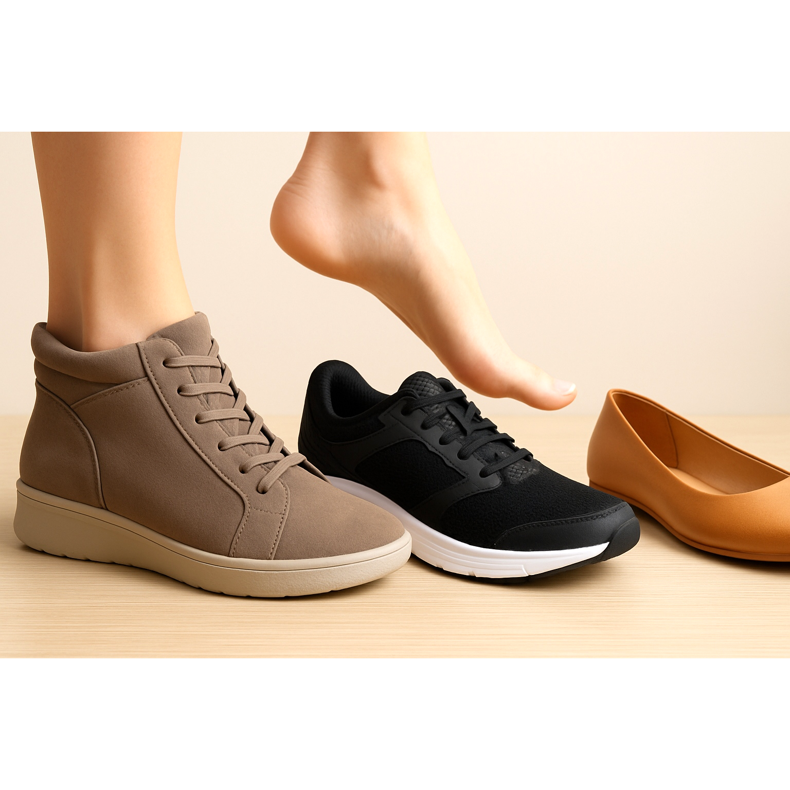
Foot types according to arch height
High instep
People with high arches have a clearly arched foot, which causes the middle part of the foot to have minimal contact with the ground. This build requires shoes with good cushioning in the heel and forefoot and with a higher upper. A low upper may put pressure on the back of the foot. Shoes with elastic instep inserts and a fit adjustment system work well. Avoid flats and very tight shoes.
Low arches or flat feet
A flat foot is characterized by minimal or no longitudinal arch. The entire sole of the foot is in contact with the ground. People with flat feet need shoes with arch support and a stable structure that prevents excessive pronation. Models with a contoured orthopedic insole and a stiffer midsole are ideal. It is better to avoid high-heeled shoes because they may worsen the symptoms. Sports shoes with motion control technology work well.
Neutral raise
The most universal type, with a moderate longitudinal arch. People with neutral arches have the greatest selection of shoes because most shoes are designed specifically for this type of foot. However, it is worth paying attention to individual preferences regarding the softness of the sole and the height of the upper.
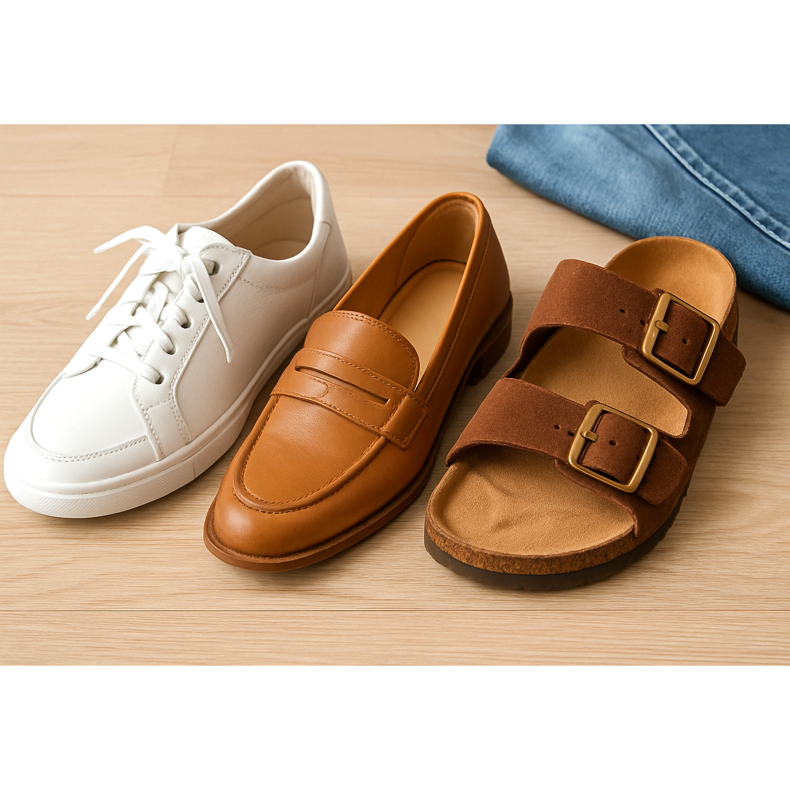
Foot types by width
Narrow foot
Narrow feet require shoes marked narrow or B width. In standard shoes, the heel can slip out while walking, leading to abrasions. People with narrow feet should look for models with adjustable fastening - lacing, Velcro or straps that will allow you to adjust the shoes. Shoes with elastic inserts and those with a quick lacing system work well. You can also use additional inserts to increase the volume of the shoe.
Standard width
This is the most common width for which most shoes are designed. Shoes marked medium, D for men or B for women will be perfect. The choices are virtually limitless in all footwear categories.
Wide foot
Wide feet need wide fit shoes marked E, EE or 2E. Shoes that are too narrow press the sides of the foot, causing pain and deformation. People with wide feet should choose shoes made of flexible materials that stretch when worn. Models made of natural leather or soft suede are ideal. Look for shoes with a rounded or square toe to allow for space. Avoid lacquered and stiff materials.
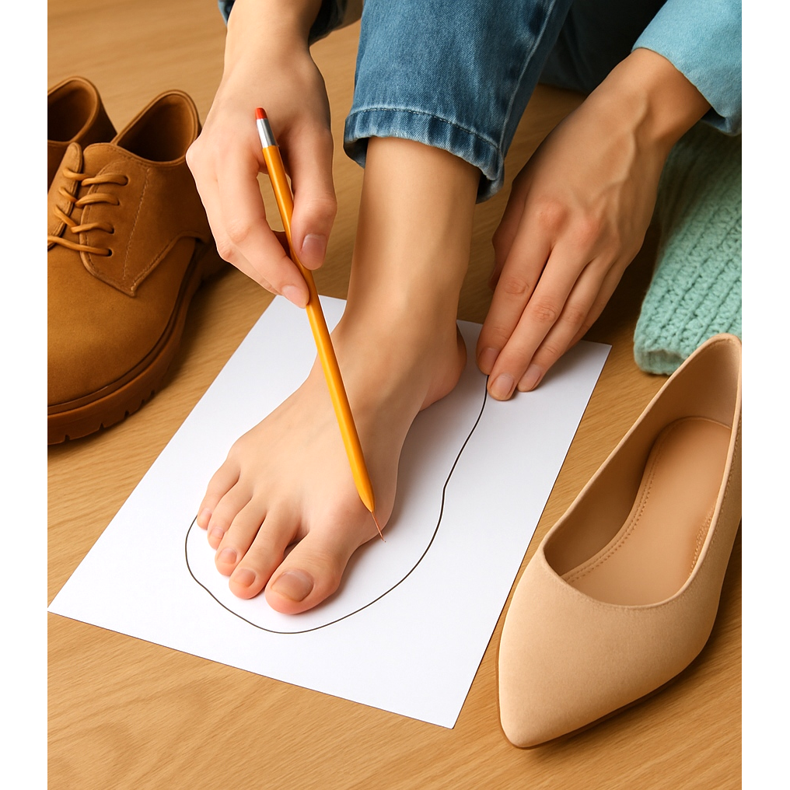
Practical tips when choosing shoes
How to measure your foot
Measure your feet at the end of the day when they are naturally a little swollen. Place your foot on a piece of paper and trace its outline. Measure the length from the longest toe to the heel and the width at the widest point. Compare the dimensions with the manufacturer's size chart. Please note that left and right feet may differ - choose the size for your larger foot.
Check pronation
Pronation is the natural movement of the foot while walking. You can check your type by looking at the wear of old shoes. Even wear of the midsole means neutral pronation. Wearing the inside edge is overpronation, requiring stabilizing shoes. Wear on the outer edge is supination in need of additional cushioning.
Always try on both shoes
Never buy shoes by trying only one on. Walking in both shoes will show true comfort. Take a few steps, check that the heel does not slide out and that the toes have enough space. There should be about one centimeter of space in front of the longest toe.
Pay attention to the material
Natural leather stretches and adapts to the foot over time. Synthetic materials retain their shape. Suede and nubuck are flexible and flexible. Paint and stiff leather persist. Choose the material that suits your foot type. Wide feet like flexible materials, narrow feet prefer stable construction.
Consult a specialist
If you have trouble fitting your shoes or experience pain when walking, consult a podiatrist. The specialist will assess the structure of your feet and recommend appropriate solutions. Sometimes orthopedic insoles are enough, other times you will need custom-made shoes.